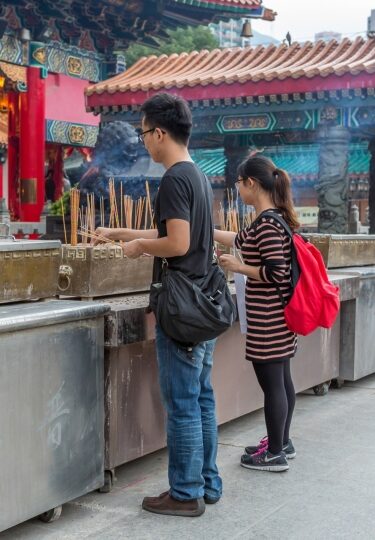Deciding whether to visit the city-state of Singapore or Hong Kong, officially a Special Administrative Region of China, is certainly challenging. At first glance, the two Asian metropolises and their islands appear kindred spirits, sharing a love of futuristic architecture, fragrant food halls, and mesmerizing light shows.
However, look closer and you’ll soon see these cities proudly cling to their own identities, not least in their signature dishes. Singaporeans cherish chili crab while Hongkongers rave about roast goose, for example.
For most, the Singapore vs. Hong Kong debate usually ends with a compromise: deciding which to visit first. To help you choose, here’s how the two compare for everything from blissful beaches and delicious dishes to timeless temples and thrilling theme parks.
Weather & When to Visit
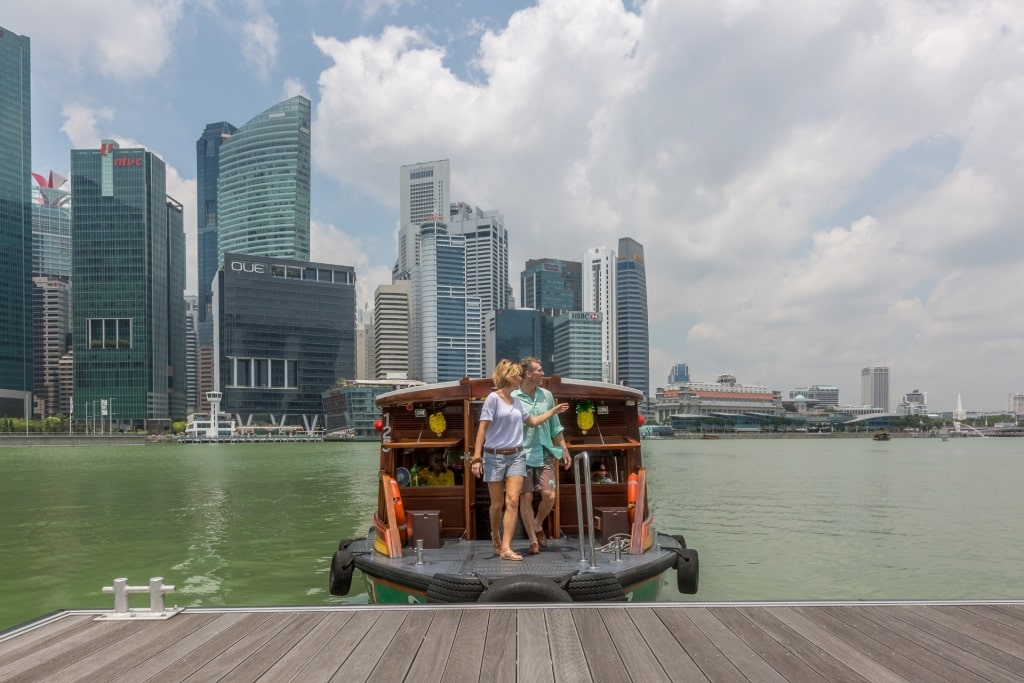
Bumboat cruise in Singapore
When it comes to seasonality, the Singapore vs. Hong Kong debate is somewhat mute. The best time to visit the pair is arguably between late October and March.
Singapore’s location in Southeast Asia, just north of the Equator, ensures a year-round tropical climate, with the mercury rarely dropping below 77°F (25°C).
Hong Kong is further north, in East Asia, just off China’s southern coast, which means it has slightly more defined seasons. In winter, it’s noticeably cooler than Singapore, but still a pleasant 66°F (19°C).
Come between October and March and you’ll see both cities at their best. From Hong Kong’s mid-autumn lantern festival to Christmas festivities and the colorful Chinese Lunar New Year celebrations in both cities, usually in late January or early February, the winter events calendar is jam packed. Hong Kong has a sakura, or cherry blossom season, too, in spring.
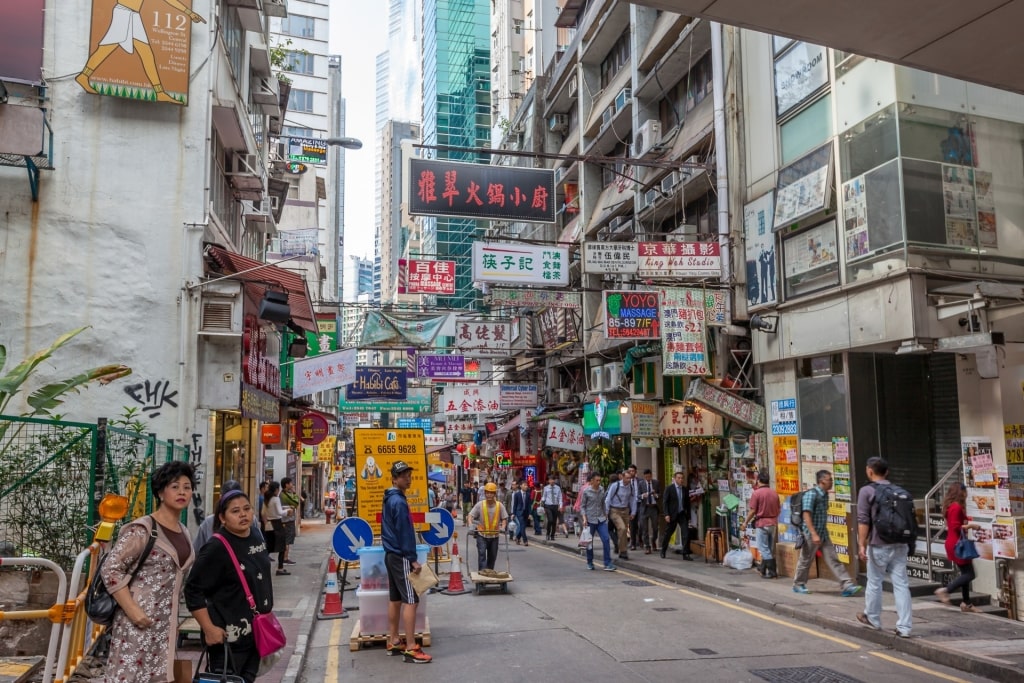
Central District, Hong Kong
Hong Kong’s hot and humid monsoon season, which usually lasts from May until September, is best avoided. Avoiding the summers will also allow you to enjoy outdoor hikes or explore the modern city on foot with less intense heat.
Futuristic Cityscapes
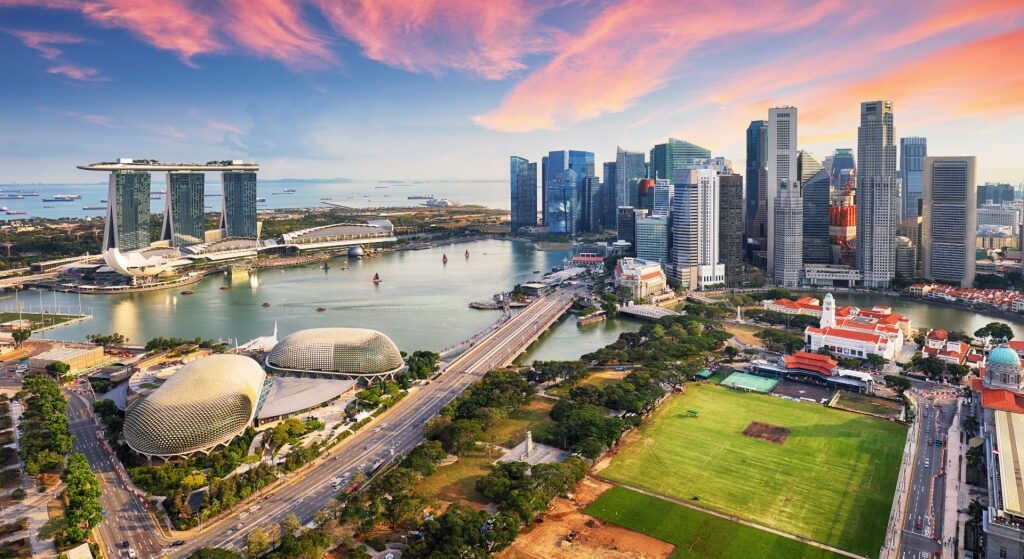
Marina Bay, Singapore
Few cities in the world boast such electrifying skylines as Singapore or Hong Kong. Dizzying, high-rise towers, jaw-dropping architectural feats, and world-class luxury living are just a few ways that these metropolises have embraced the future.
Singapores’ waterfront area around Marina Bay, which lends its name to one of the world’s most outlandish hotels, the three-towered, boat-like Marina Bay Sands, is the city’s contemporary utopia. A cocktail at the Sky Bar alongside the spectacular infinity pool shouldn’t be missed.
Walking around this futuristic waterfront neighborhood, home to the Singapore Flyer, a 540-foot-high ferris wheel, the Esplanade theaters, and high-end shopping complexes, you’ll feel like you’ve been transported to another century. This is especially true at night when the Spectra Light and Sound Show illuminates the skyline.
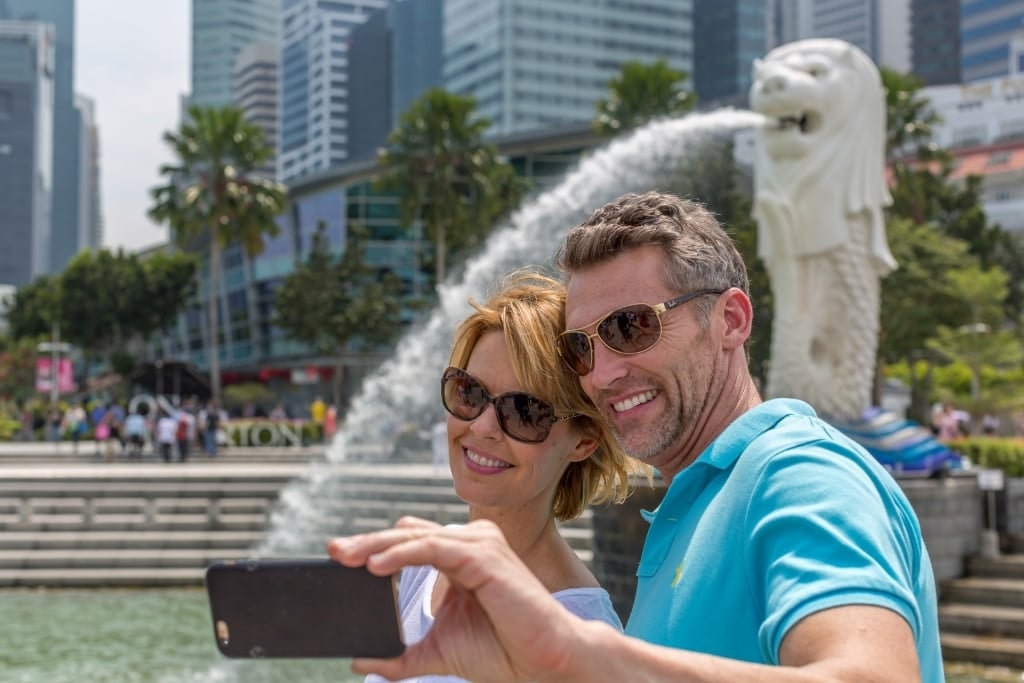
Merlion Park, Singapore
Thankfully, Singapore’s history isn’t overlooked, with a water feature version of the Merlion, the half-fish, half-lion symbol of Singapore—affectionately known as the Lion City—taking pride of place.
Equally fantastical is Gardens by the Bay, featuring glass-domed cloud forests, bird-housing wetlands, and world-spanning plant species housed inside what is essentially a giant, purpose-built greenhouse. Visiting here is one of the best things to do in Singapore with kids.
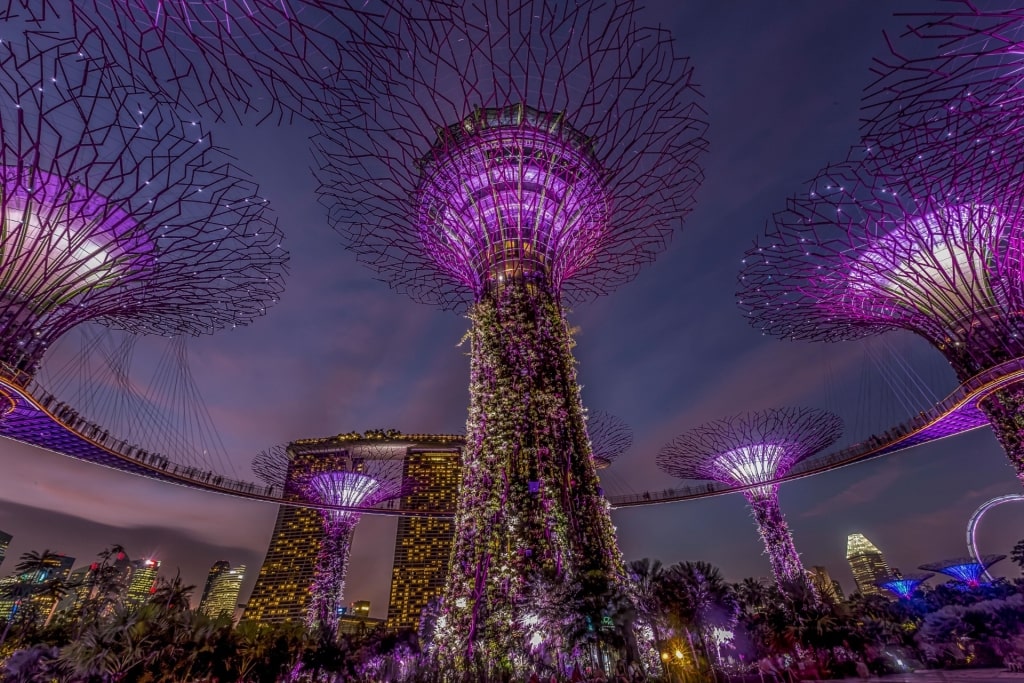
Supertrees in Gardens by the Bay, Singapore
Dotted around this creatively landscaped space are Singapore’s iconic Supertrees. These artificial, vertical gardens bring another dimension to this famous landmark in Singapore.
Thanks to a suspended bridge and even a tucked-away bar atop one of the green and purple structures, you can enjoy an alternative perspective from atop these man-made wonders.
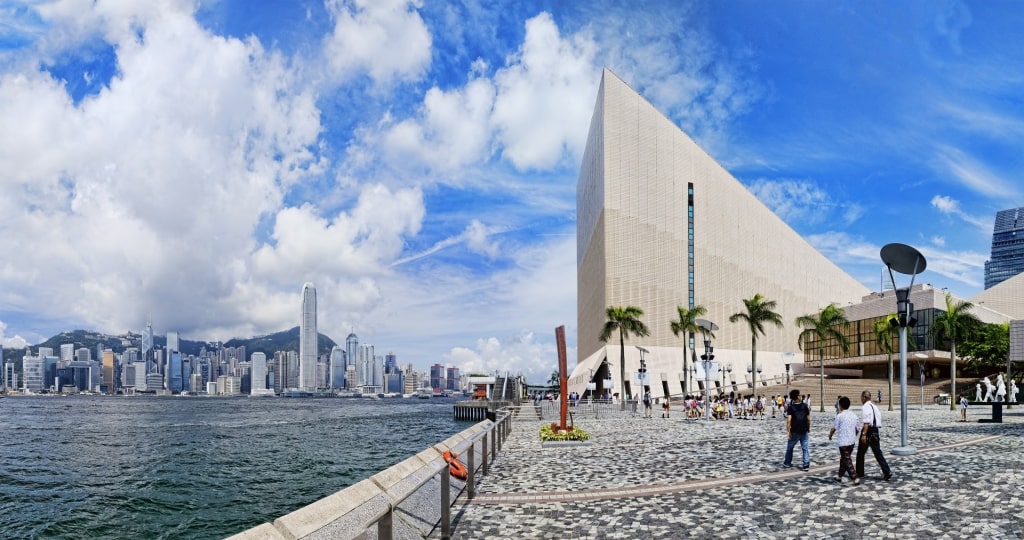
Tsim Sha Tsui Promenade, Hong Kong
Not to be outdone, Hong Kong’s skyline is just as captivating, especially around Victoria Harbour. Whether you’re admiring the skyline of Hong Kong Island while strolling along the Hollywood-inspired Avenue of Stars or Tsim Sha Tsui Promenade, or sightseeing from one of Hong Kong’s typical three-masted wooden junk boats, it’s a modern marvel.
By dark, the Symphony of Lights Show provides a similar show-stopping experience to Singapore, with laser lights and illuminated messages on LED-clad skyscrapers set against an orchestral recording.
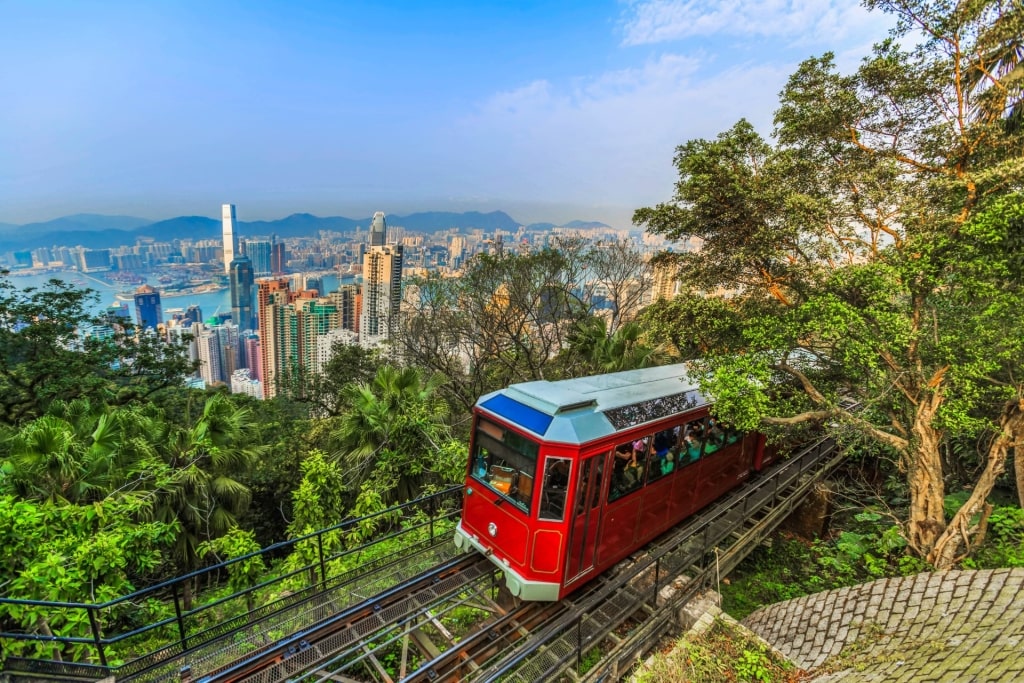
Victoria Peak, Hong Kong
For an alternative and more verdant Hong Kong panorama, ride the late 19th-century funicular up to Victoria Peak. From the wooded hill on Hong Kong Island, a favorite retreat for locals seeking greenery or a weekend jog, you’ll be met with sweeping views across Victoria Harbour and the skyscrapers of Kowloon.
Read: Three Days in Singapore
Distinct Districts & Religious Attractions
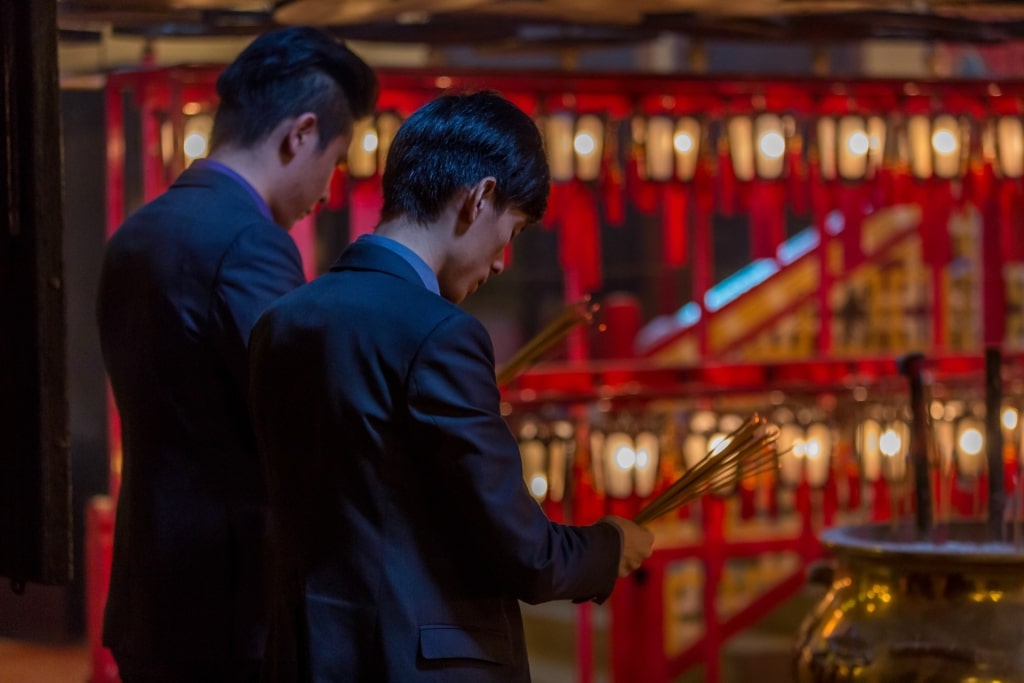
Man Mo Temple, Hong Kong
While it’s hard to imagine when looking over a sea of skyscrapers, both Singapore and Hong Kong had humble beginnings as fishing villages.
Further similarities stem from the pair being former British colonies. For nearly a century and a half, Britain controlled both, leaving English as one of the official languages, alongside Mandarin Chinese, Malay, and Tamil in Singapore and Cantonese Chinese in Hong Kong.
Look further back than the contemporary era, though, and you’ll find more defined differences that add additional dimensions to the Singapore vs. Hong Kong debate. These differences are best discovered while exploring the two cities’ distinct districts.
Singapore’s multi-ethnicity and interfaith history have created a handful of personality-packed neighborhoods. Many of these were shaped by the decisions of Sir Stamford Raffles, the British founder of modern-day Singapore port.
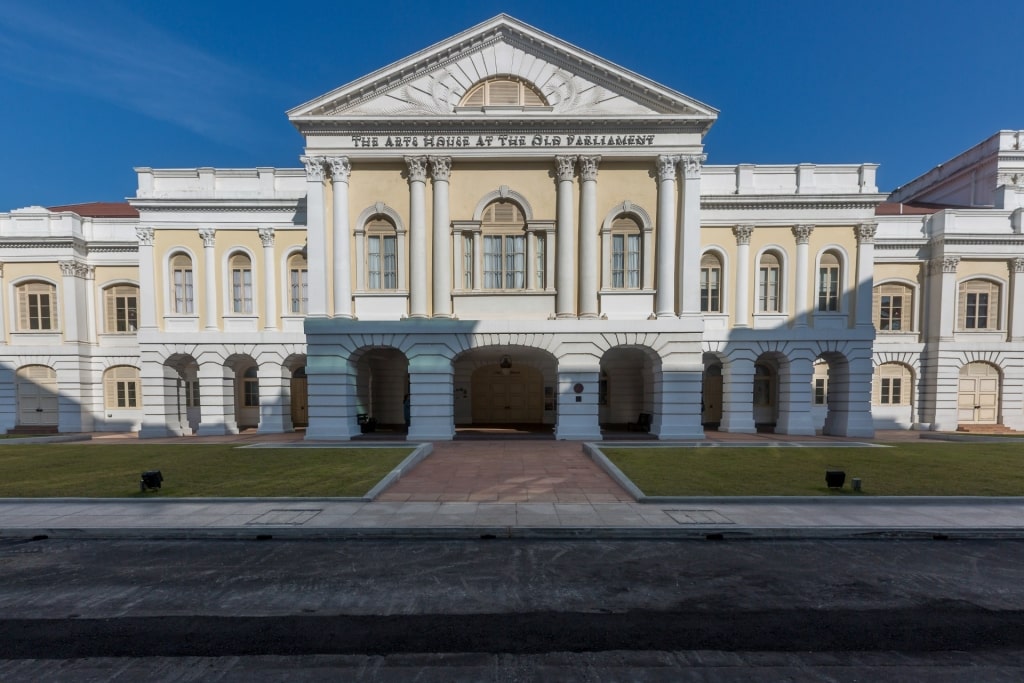
Old Parliament House, Singapore
In the Colonial District, you’ll find most of the grand buildings from his time, such as the Old Parliament House and the former Supreme Court. Fort Canning Park houses World War II bunkers and various gardens, including Raffles own selection of imported plant species and spices.
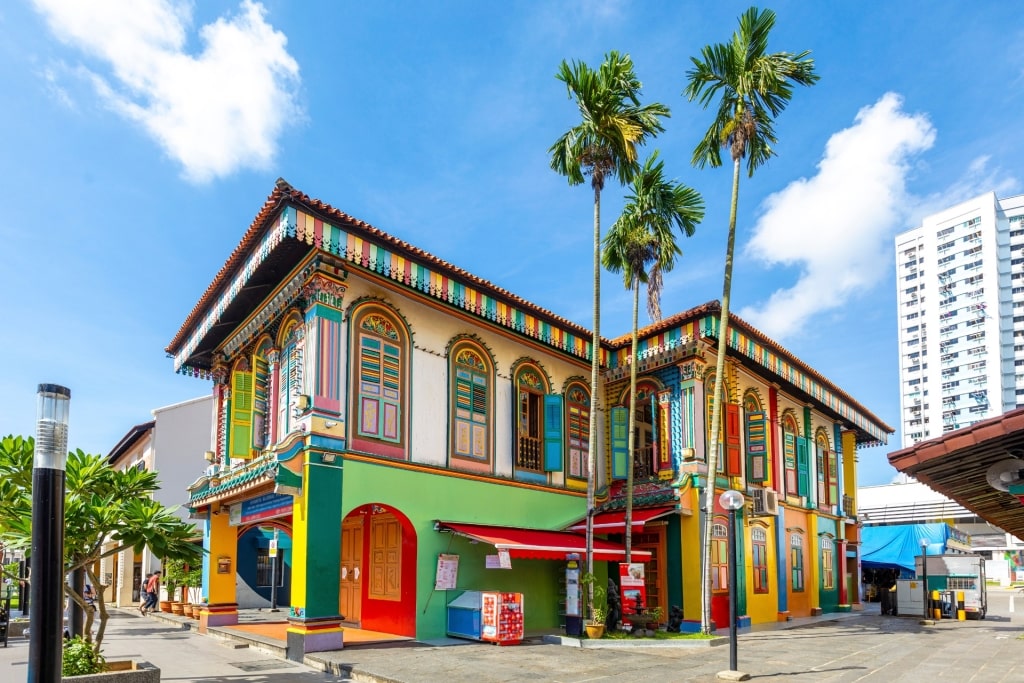
Little India, Singapore
Other districts defined by the British include Little India, established after a wave of worker migration. Nowadays, you’ll find a colorful corner of the city fragranced by spice markets, kaleidoscopic flower markets, and striking temples, such as Sri Veeramakaliamman Temple, one of Singapore’s oldest.
However, the city’s most impressive temple, the intricately decorated Buddha Tooth Relic Temple, is located in Chinatown. A crimson, multi-layered structure adorned with Chinese paper lanterns, the decadent interior of Buddha statues and gold-embellished ceilings is magnificent.
In Kampong Gelam, most recognisable for the golden domes of the mid 19th-century Sultan Mosque, you can experience a little of everything Singapore treasures. Here, you’ll find everything from Haji Lane’s world-cuisine restaurants adorned with street art and murals to artisanal boutiques and a heritage center dedicated to Malay culture.
Hong Kong’s districts are equally storied, with temples and gardens providing cultured contrast and laid-back respite from a city best known for towering blocks and neon signs.
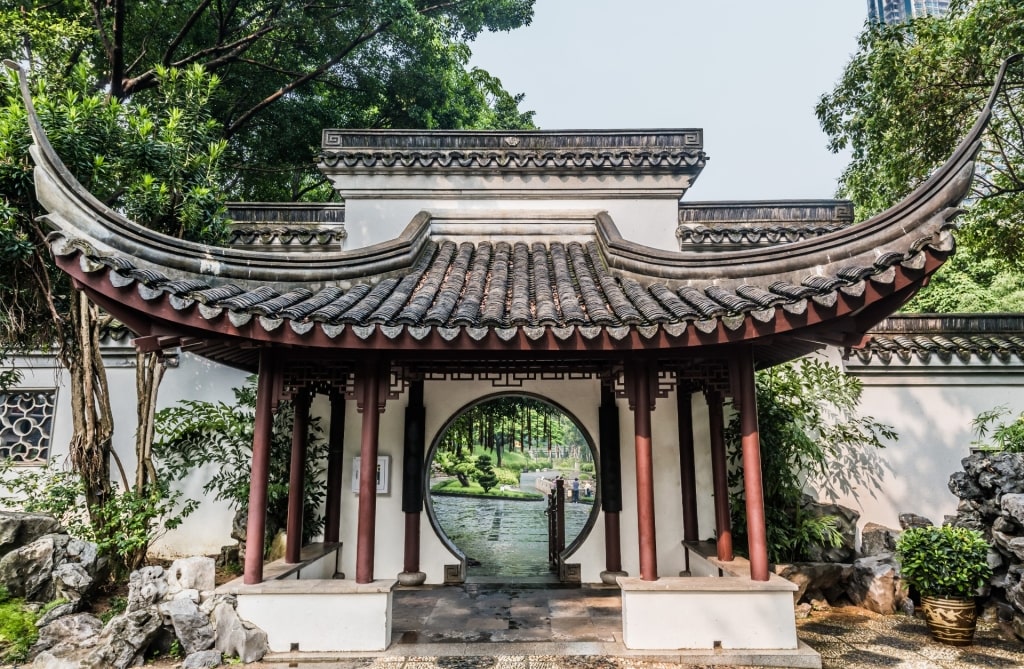
Kowloon Walled City Park, Hong Kong
One of the most peaceful is Kowloon Walled City Park, a former Chinese fortification endowed with ponds, pavilions, and modern art alongside the remaining Qing Dynasty Yamen, the garrison’s former administrative building.
Other temples offer insights into Hong Kong’s many faiths. The Taoist Man Mo Temple complex, with its ornate wooden panels and countless incense coils, and the deceptively-modern Buddhist Chi Lin Nunnery, complete with adjacent bonsai-dotted gardens, are two of the finest.
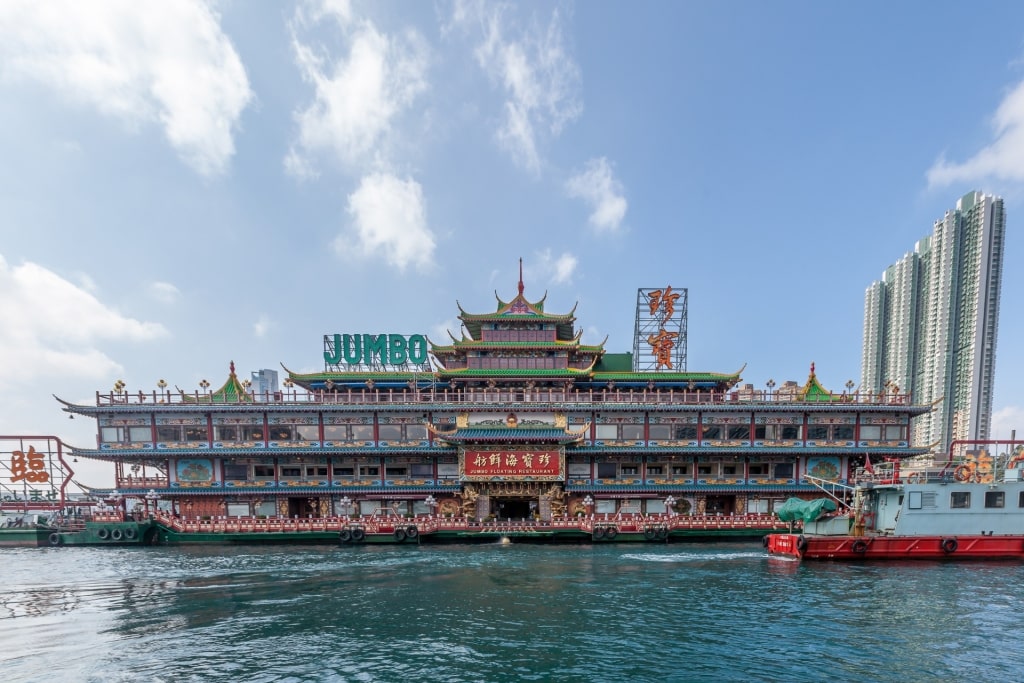
Aberdeen Harbour, Hong Kong
Vestiges of Hong Kong’s more simpler, fishing-focused past also live on in Aberdeen Harbour where much of life still plays out on the water. Head here to see old-school houseboats and shop or dine at the floating village formed by hundreds of traditional wooden boats.
Blissful Beaches & Idyllic Islands
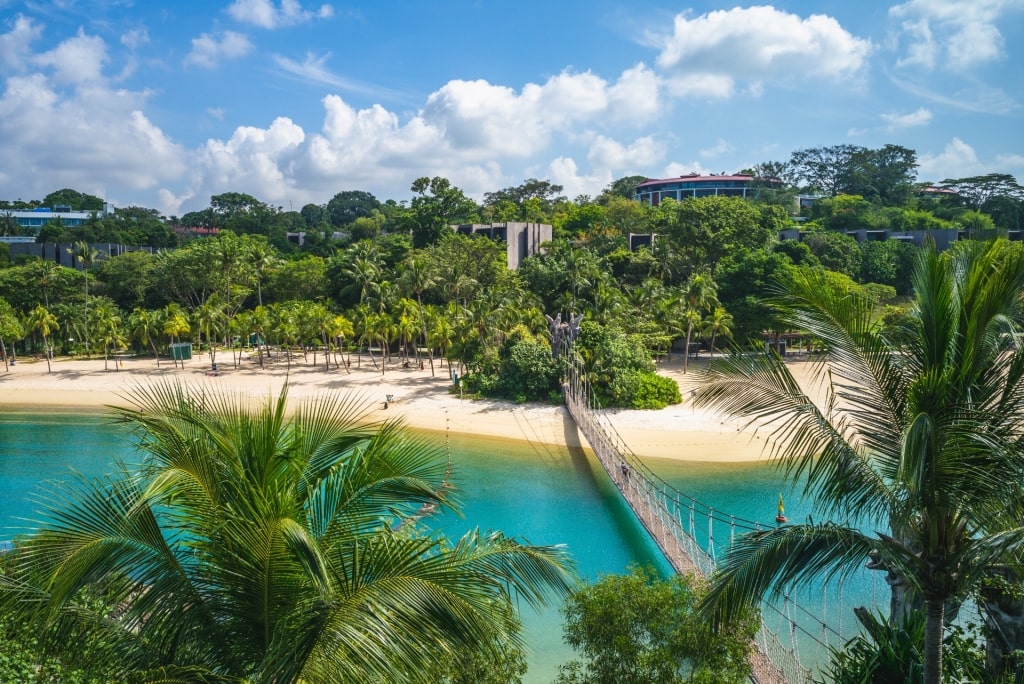
Sentosa, Singapore
If you’re hoping to crown Singapore or Hong Kong your vacation-winner based on beaches alone, you will find that inviting sands, idyllic isles, and beach-bar-backed bays are in no short supply in either.
The best beaches in Singapore span from the artificial sands of Sentosa, where palm trees and beach clubs provide shaded retreats from paddling in the shallow turquoise waters, to the more overlooked shorelines of laid-back Coney Island.
Indeed, riding a traditional wooden bumboat to one of Singapore’s lesser-developed isles will show you a very different side of the country. Rent a bicycle on Pulau Ubin to witness the island’s dense mangrove habitats, giant monitor lizards, and untouched beaches, and you’ll sail back to the main island feeling serene.
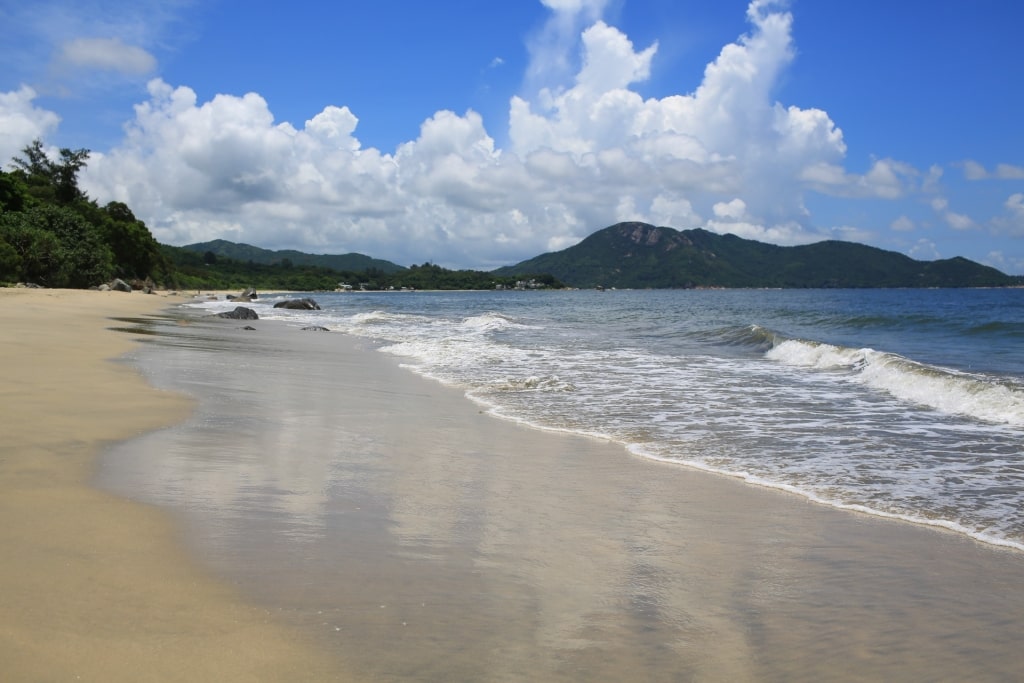
Cheung Sha Beach on Lantau Island, Hong Kong
Meanwhile, a short hop from Hong Kong’s downtown will bring you to some gorgeous, greenery-backed bays far from any urban sprawl. Steal away to the Sai Kung peninsula for an atmospheric bay of junk boats and fish fresh from the boat, or settle on the sweeping sands of Cheung Sha Beach on Lantau Island for a more serene sunbathing experience.
If you’d prefer your island escapades on the trails rather than a towel, Lantau also obliges. By far the most impressive landmark on the island is the Tian Tan Buddha, reachable by forested trail or cable car. Once under the shadow of the 111-foot-high bronze statue, relish the far-reaching views of misty mountains, a far cry from those at Victoria Peak.
Delicious Dishes
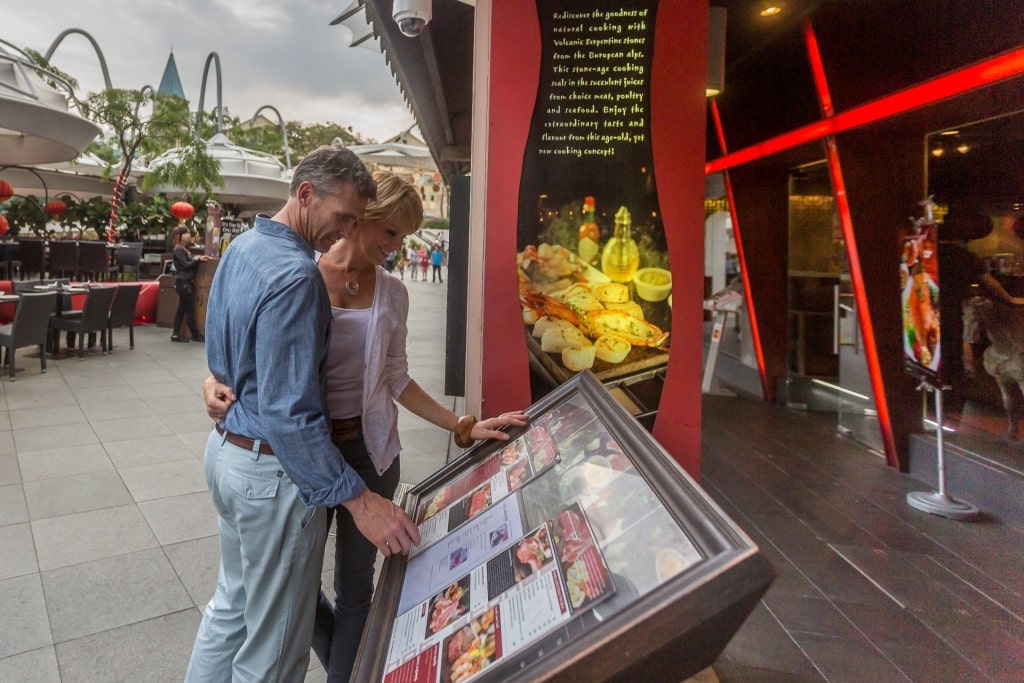
Restaurant in Singapore
Singling out which is the most delicious destination in the Singapore vs. Hong Kong debate is near impossible. First-class street food and hawker centers (food markets) are ubiquitous in both cities. You’ll struggle to find a bad meal, whether dining in an accolade-heavy restaurant or grabbing an affordable bite to go.
Ask a Singaporean what makes their country one of the world’s best food destinations and they’ll rattle off a list of tempting treats covering a wide range of cuisines. Chicken rice, Singapore’s de facto national dish, can be found everywhere.
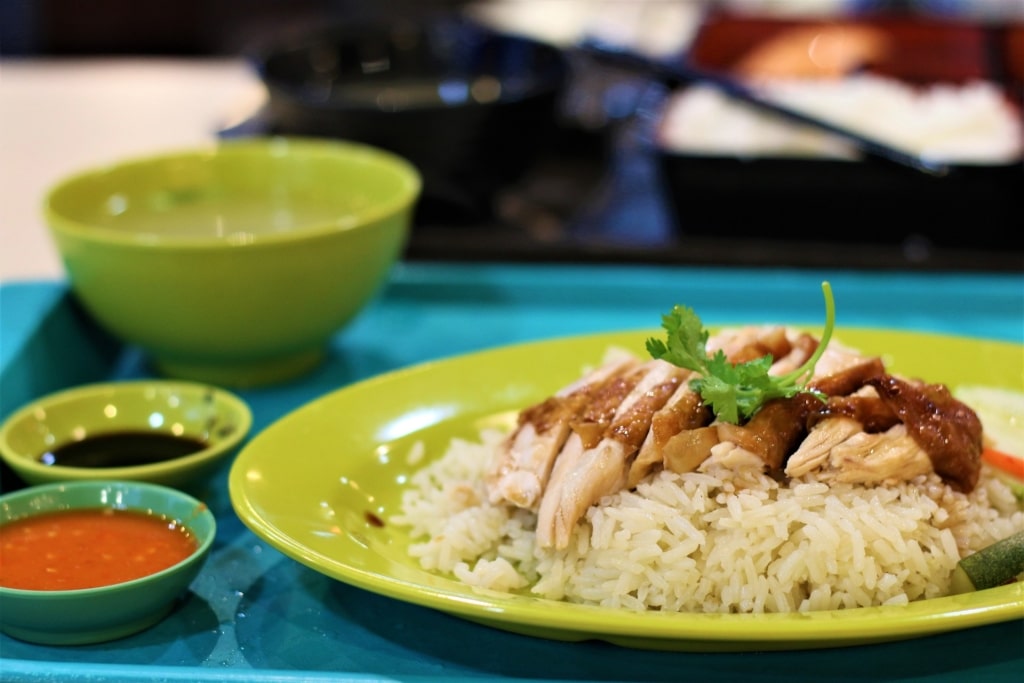
Singapore chicken rice
Simple yet sumptuous, this boiled or sometimes roasted chicken dish, served with a chill and ginger-infused sauce, has its roots in the Chinese province of Hainan. Head to Hawker Chan for a delicious, affordable, and once Michelin-awarded sampling.
Other signature dishes not to miss include chili crab, a decadent and sometimes messy meal where the abundant sweet and tangy sauce steals the show. Kway teow, a lard-cooked rice noodle dish, and nasi lemak, a Malay plate heaped with coconut-infused rice, anchovies, spicy sambal sauce, and either fried fish or chicken, are equally delicious.
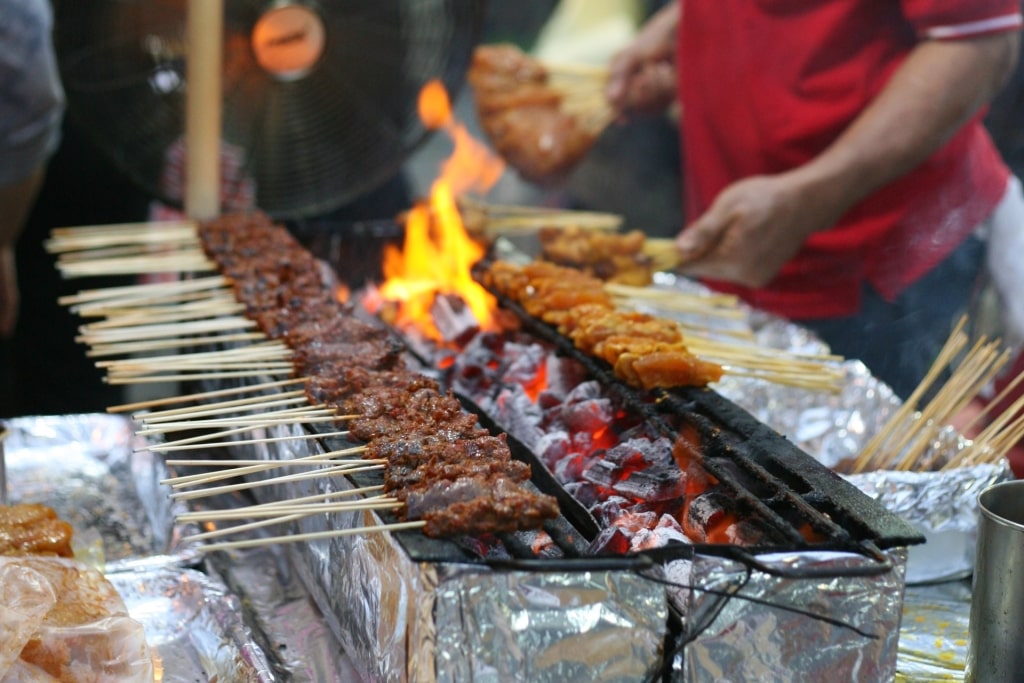
Lau Pa Sat, Singapore
Some of the best spots to sample authentic Singaporean cuisine are the most humble, such as the communal-style Maxwell Food Centre in Chinatown or atmospheric Lau Pa Sat. There are plenty of decadent options too, including the Raffles Hotel, home of the Singapore Sling cocktail.
Hongkongers are equally passionate about their plates and the city boasts some of the most wallet-friendly Michelin listings in the world. Hawker centers are commonplace, too, but Hong Kong undoubtedly claims a clear lead when it comes to street stall or market snacking.
No matter your dining preference, dishes from all corners of China feature on the city’s menus while local specialties, such as roast goose—long-standing Yue Kee is a contender for the city’s best—shouldn’t be overlooked.
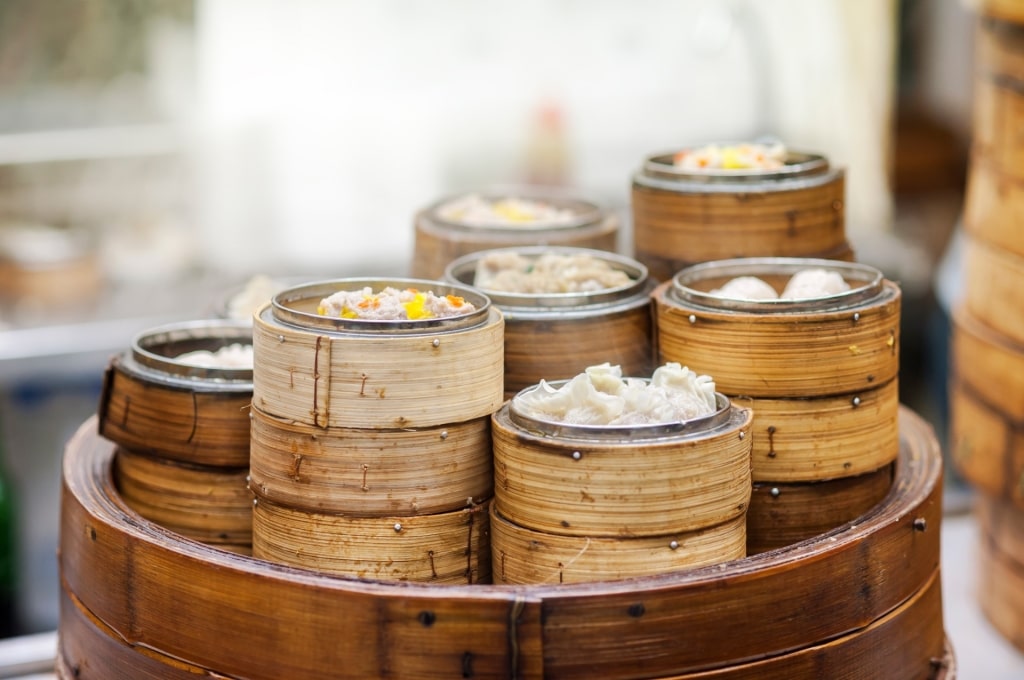
Dim sum
For an eclectic tasting, a selection of dim sum is the perfect answer. These small, usually bite-sized morsels span steamed shrimp dumplings and pork buns to bean curd beef balls. Cantonese-style barbecued meats, in particular, char siu pork, wonton noodle soup, and fried fish balls are other beloved local dishes that rival Singapore’s scrumptious menu.
Serious Shopping
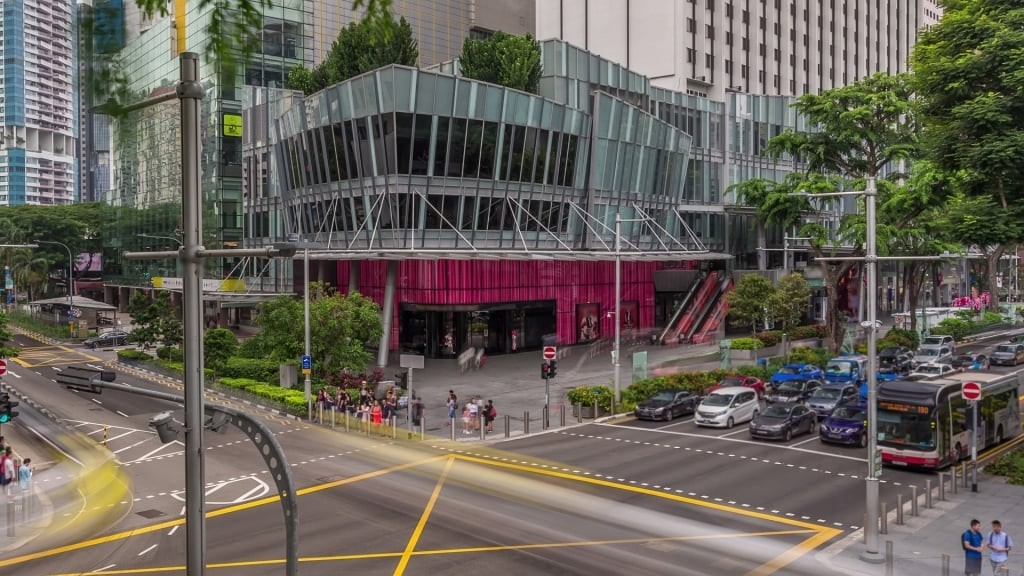
Orchard Road, Singapore
In a retail therapy battle, both cities come out fighting with serious shopping credentials, plus tax-free savings to boot. Across mega malls and history-defining boulevards, you’ll find all of the major international brands alongside regional designers and boutiques.
Singapore’s Orchard Road, named for the fruit trees that used to line this once overlooked street, is the city’s pulsating, purchasing heart. Take a stroll down this wide, glitzy boulevard for spaceship-like shopping centers and luxury labels galore.
If you’d prefer a more typical Singaporean souvenir, head into Design Orchard, where local fashion and crafts take the spotlight in one of Singapore’s newest retail spaces. And with the Tourism Refund Scheme, you’re able to claim back the tax on all larger purchases.
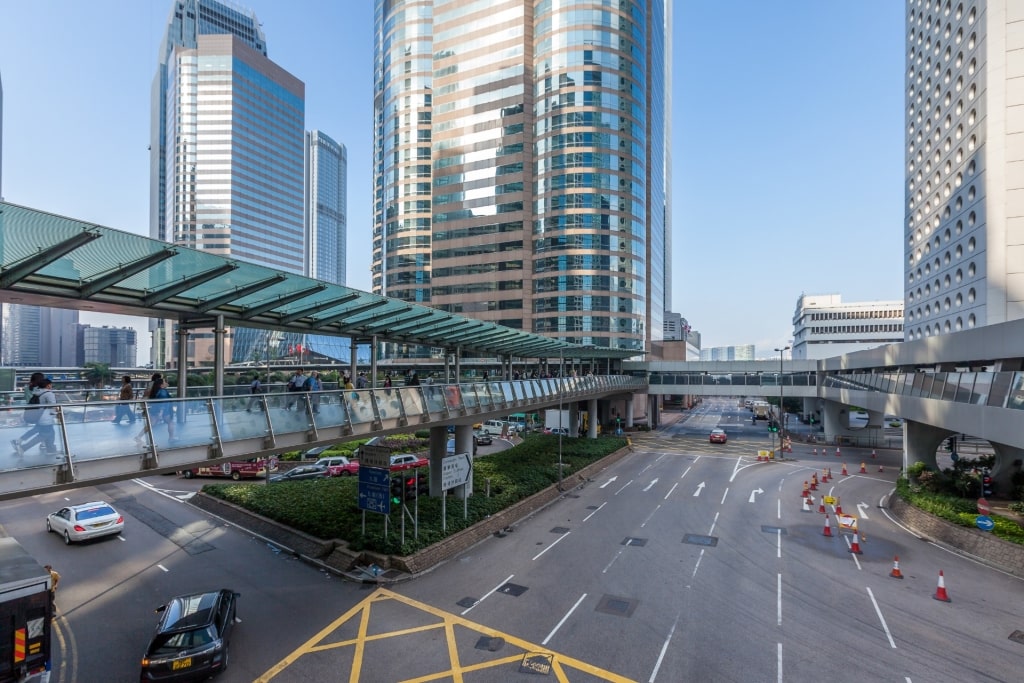
Central District, Hong Kong
In Hong Kong, tax-free shopping is even more straightforward, with no sales tax added to most purchases. For big names and even bigger buildings, the Central District reigns shopping supreme. Art and antique aficionados will find delight on Hollywood Road, one of Hong Kong’s oldest streets, built at the start of Britain’s occupation.
However, Hong Kong really excels with tech, gadgets, and memorable markets, particularly those found under the city’s signature neon signs around the Mong Kok district. Open-air Stanley Market is another shopping staple, especially if silk goods are on your Hong Kong souvenir list.
Rides & Thrills
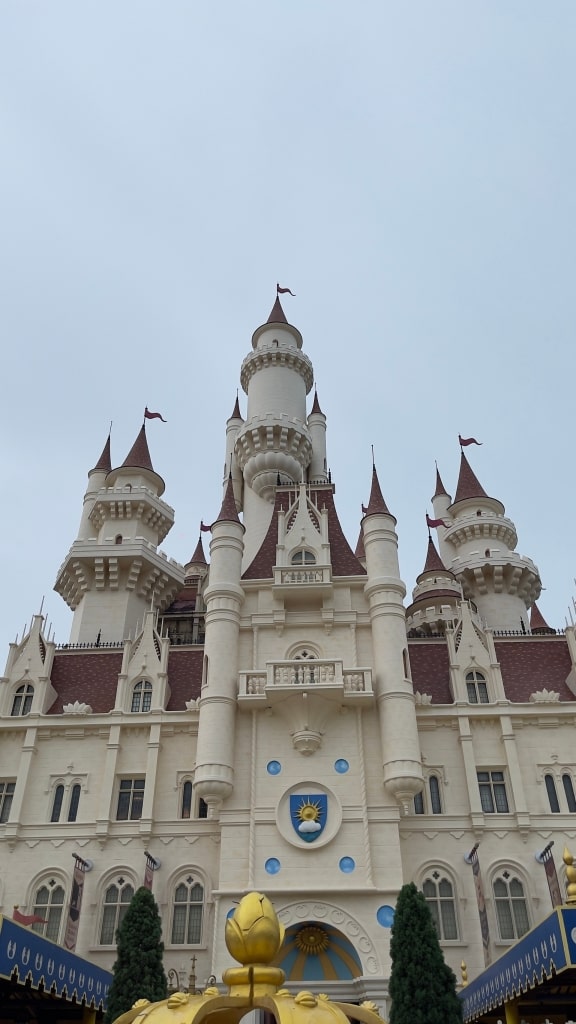
Universal Studios, Singapore
Whether you’re roller coaster obsessed or a Hollywood fan, there’s no need to spend hours deciding between Singapore or Hong Kong. Both have highly-rated theme parks, including outposts of some of the USA’s most famous amusements.
Singapore’s Universal Studios delivers a fun-packed visit. With two dozen attractions spread across six themed areas including 3D rides and meet-and-greets with animated silver screen stars, it’s a perfect, pocket-sized day out rather than requiring a multi-day ticket.
It’s set on Singapore’s resort island of Sentosa, which also hosts Adventure Cove Waterpark, perfect for sliding, splashing, and cooling down from the tropical climate, and one of the world’s most impressive aquariums.
Not to be outdone, Hong Kong’s Disneyland brings a little slice of Orlando to Lantau Island. With world-beloved Disney character experiences, enchanting shows, carousels, roller coasters, and the signature fairytale castle, fans of all ages won’t be disappointed.
Read: 3 Days in Hong Kong
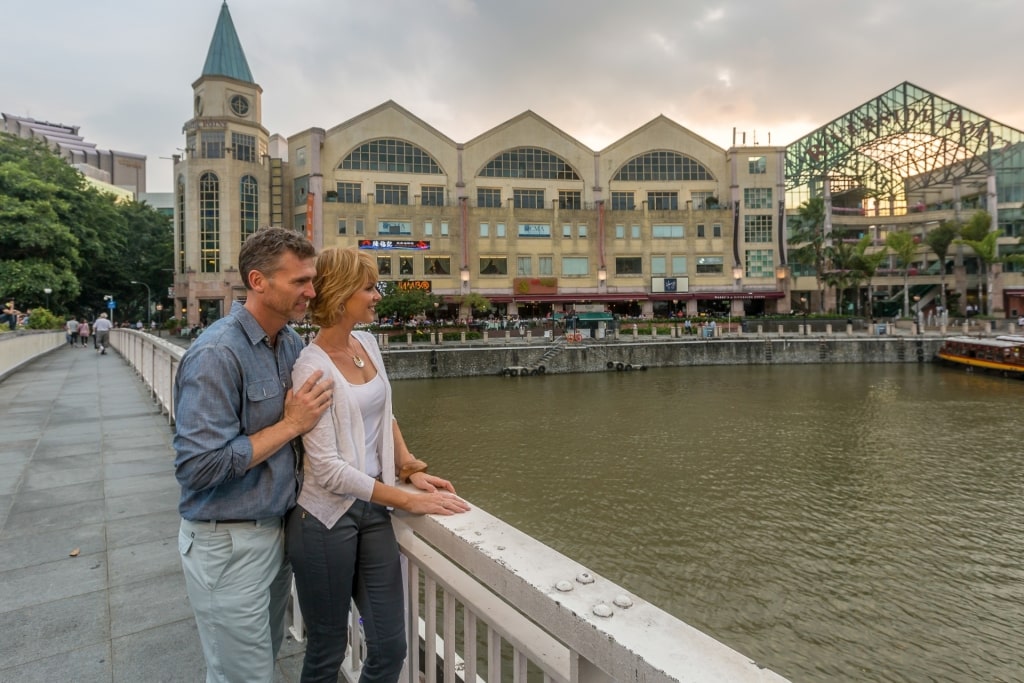
Clarke Quay, Singapore
Still undecided between Singapore or Hong Kong? No problem. Browse Celebrity’s exciting cruises to Singapore and cruises to Hong Kong to start planning your perfect city-hopping sailing.
